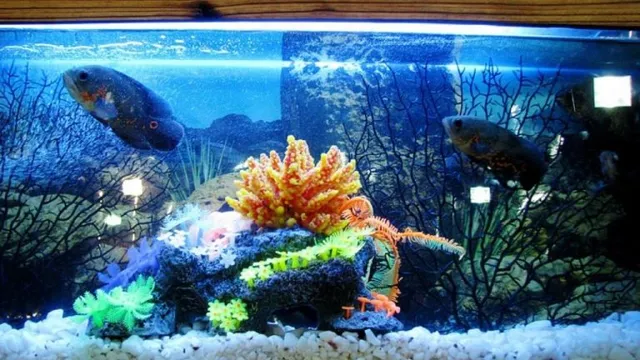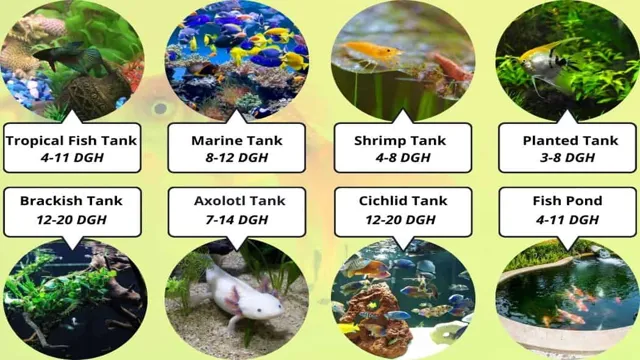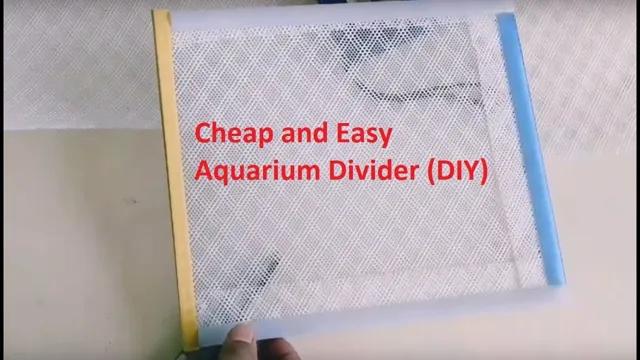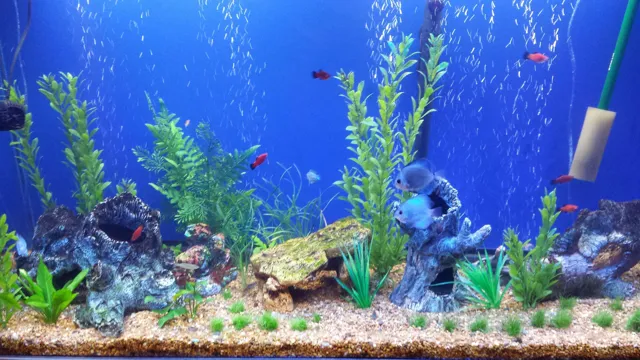How to Put Duckweed in Aquarium: A Step-by-Step Guide to Growing Duckweed in Fish Tanks
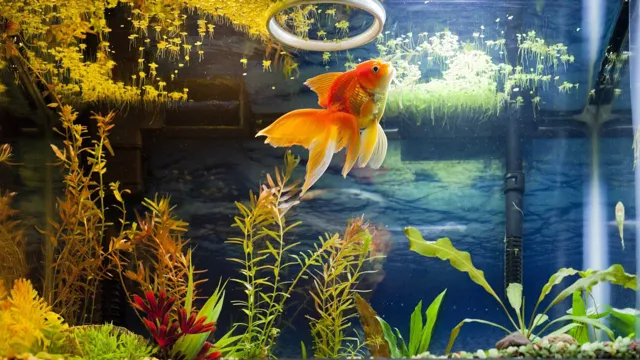
Have you ever considered adding duckweed to your aquarium? It might sound unconventional, but duckweed can actually be a great addition to your aquatic environment. Not only does it add an interesting aesthetic touch, but it can also play a vital role in maintaining water quality. So, if you’re ready to take your aquarium game to the next level, let’s get started on how to add duckweed to your aquatic masterpiece.
Firstly, let’s discuss what duckweed actually is. It’s a type of floating plant that has small, round leaves and grows quickly with the right conditions. It’s often found naturally in ponds and other bodies of water, making it a great addition to any freshwater aquarium.
Furthermore, curating your own duckweed can make for an easy and fun home experiment. When it comes to adding duckweed to your aquarium, there are a few things to keep in mind. Firstly, ensure that your aquarium has the right conditions for the duckweed to grow.
This includes good lighting and nutrient-rich water. Once these conditions are met, adding duckweed to your aquarium is as simple as floating it on the surface of the water. The benefits of adding duckweed to your aquarium go beyond just its aesthetic appeal.
Duckweed is great for keeping the water quality in check by absorbing excess nutrients from the water. This means that it can help prevent algae growth and maintain a healthy environment for your aquatic pets. In conclusion, adding duckweed to your aquarium can not only be visually appealing but can also play an important role in maintaining the water quality.
It’s an easy and fun way to elevate your aquatic masterpiece while ensuring the well-being of your aquatic pets. So, why not give it a try and see the difference it can make in your aquarium?
What is Duckweed?
Duckweed is a tiny, free-floating aquatic plant that can be a great addition to your aquarium. These plants are easy to care for and can help to improve the water quality in your tank. To put duckweed in your aquarium, simply add it to the water and allow it to float on the surface.
It may take some time for the duckweed to settle in, but once it does, it will begin to grow and multiply. It is important to keep an eye on the duckweed growth, as it can quickly overtake your tank if left unchecked. However, a healthy amount of duckweed can provide benefits such as reducing nitrate levels in the water and providing a source of food for aquarium inhabitants.
So why not give duckweed a try and see if it’s a good fit for your aquatic setup?
Description of duckweed plant.
Duckweed is a tiny floating plant that belongs to the family Lemnaceae. It is considered one of the smallest flowering plants in the world, and it can be found in calm freshwater bodies such as ponds, lakes, and slow-moving streams. Duckweed is a small, simple plant that consists of a single circular leaf known as a frond that floats on the surface of the water.
The frond has no stems or roots and draws its nutrients directly from the water. It reproduces rapidly and can form dense mats that cover the surface of still water bodies. Duckweed is an essential component of the food chain as it provides food and habitat for many aquatic animals, including fish and insects.
It is also a highly efficient bio-accumulator and can be used to remove excess nutrients and pollutants from the water. Duckweed is an excellent source of protein and other nutrients and is used as a food source for humans and animals in many parts of the world.

Benefits of Adding Duckweed to Your Aquarium
If you’re wondering how to put duckweed in your aquarium, it’s actually a straightforward process. Simply scoop up some duckweed with a net and gently place it on the surface of your aquarium water. But why should you consider adding duckweed to your aquarium in the first place? Well, there are a few key benefits.
Firstly, duckweed is great at absorbing excess nutrients from your water, which can help keep it clean and prevent the growth of harmful algae. Secondly, it provides a natural habitat and food source for aquatic creatures like shrimp and fish. Lastly, duckweed can help oxygenate your water and improve its overall quality.
So if you’re looking for an easy way to enhance your aquarium’s ecosystem, consider giving duckweed a try!
Improves water quality and creates a natural look.
Duckweed is a tiny floating plant that can offer significant benefits to your aquarium. One of its main advantages is that it improves water quality by absorbing excess nutrients and reducing algae growth. This means that adding duckweed to your tank can reduce the need for frequent water changes and chemical treatments.
In addition to its practical benefits, duckweed also enhances the natural look of your aquarium by creating a surface mat that resembles an ecosystem in miniature. This creates a more appealing and realistic environment for your fish and other aquatic creatures. So, if you’re looking for a simple and effective way to keep your aquarium healthy and attractive, consider adding some duckweed to the mix.
Provides shade and reduces algae growth.
Duckweed is a fantastic addition to any aquarium. Apart from being aesthetically pleasing, it has many benefits that make it an excellent choice for aquarium owners. One of the main advantages is that it helps to provide shade for the aquatic creatures in the tank.
This is especially crucial if the aquarium is placed in a location where it is exposed to direct sunlight, which can lead to temperature fluctuations and, ultimately, distress for the inhabitants. Duckweed provides a natural source of shading, mitigating the effects of direct sunlight and providing a more stable water temperature in the aquarium. Another benefit of adding duckweed to your aquarium is that it helps to reduce algae growth.
This is because duckweed absorbs nutrients from the water, effectively blocking the light that algae thrive on. By minimizing algae growth, your aquarium’s ecosystem remains in balance, reducing the need for harsh chemical treatments that can be harmful to your fish. Overall, adding duckweed to your aquarium is a simple, cost-effective way to maintain a healthy and thriving aquatic environment.
Preparing Duckweed for Your Aquarium
If you’re looking for a natural way to add some green to your aquarium and improve water quality, duckweed might be just what you need. Before putting duckweed in your aquarium, there are a few things you should do to prepare it. First, make sure you get your duckweed from a reputable source to avoid introducing any harmful organisms into your tank.
Rinse the duckweed thoroughly in clean, dechlorinated water to remove any dirt or debris. Next, you can add the duckweed directly to your aquarium, making sure to spread it evenly across the surface of the water. It’s important to monitor the growth of duckweed in your tank, as it can quickly become too abundant and block out light from other plants.
Regularly removing excess duckweed can help keep your aquarium healthy and balanced. With a little bit of preparation and care, adding duckweed to your aquarium can provide a variety of benefits for both your fish and the overall ecosystem.
Rinse duckweed thoroughly to remove any debris and pests.
When adding duckweed to your aquarium, it’s crucial to prepare it thoroughly beforehand. One essential step is to rinse the duckweed thoroughly to remove any debris and pests that may be present. Not only will this ensure that your aquarium remains clean, but it will also prevent any unwanted organisms from entering the habitat and potentially harming your aquatic creatures.
To rinse the duckweed, you can place it in a colander and run cold water over it, gently agitating it with your fingers to loosen any dirt or debris trapped in the leaves. You’ll want to repeat this process a few times until the water runs clear. By taking the time to clean your duckweed properly, you’ll provide a healthy environment for your aquarium inhabitants, and your plants will be able to thrive.
Trim the roots of duckweed to reduce stress.
If you’re considering adding duckweed to your aquarium, there are a few things you should know to ensure its success. One important step is trimming the roots of the duckweed. This helps to reduce stress on the plant, allowing it to better adapt to its new environment.
To do this, simply remove some of the longer roots using a pair of scissors or your fingers. Don’t worry, this won’t harm the plant and will actually encourage new root growth. Additionally, it’s important to remember that duckweed is a fast-growing plant that requires plenty of light and nutrients.
Consider adding a nutrient-rich substrate to your aquarium and using a high-quality LED light to encourage growth. With a little bit of care and attention, your aquarium can thrive with this unique and beneficial plant.
Adding Duckweed to Your Aquarium
Are you interested in adding duckweed to your aquarium but not sure how to do it? Well, it’s actually a pretty easy process! First, make sure your aquarium is clean and free of debris. Then, simply take a small handful of duckweed and gently place it on the surface of the aquarium water. It’s important to not weigh the duckweed down with any rocks or substrate so that it can float freely.
Over time, the duckweed will multiply and form a natural carpet-like layer on your water’s surface. Some hobbyists even use duckweed as a nutrient absorber, helping remove excess nutrients like nitrates that can lead to algae blooms. With its fast growth rate, easy care and beautiful appearance, adding duckweed to your aquarium is definitely worth considering!
Gently place duckweed on the surface of your aquarium.
Adding duckweed to your aquarium can be a great addition to your fish’s diet and overall health. These tiny aquatic plants are rich in nutrients that can help your fish thrive and make your aquarium look more natural. To add duckweed to your tank, gently place the plants on the surface of the water.
Duckweed will spread easily and can quickly cover the surface of the water if left unchecked. However, it is easy to remove if it becomes too abundant. Regularly trimming or removing excess duckweed can prevent it from overcrowding your aquarium and taking up too many nutrients.
Adding duckweed to your aquarium is a simple and easy way to create a healthier environment for your fish. So, why not give it a try and see the difference it can make?
Ensure the duckweed is not covering the entire surface of the water.
Adding duckweed to your aquarium can be a great way to enhance the overall aesthetic of your tank and improve the quality of life for your aquatic pets. However, it is important to ensure that the duckweed is not covering the entire surface of the water. While this can provide some shade and shelter for your fish, it can also prevent oxygen from properly circulating and ultimately lead to oxygen depletion.
To avoid this, you should only add a small amount of duckweed and monitor its growth closely. Regularly remove any excess duckweed to maintain a healthy balance in your tank. By following these simple steps, you can safely and effectively add duckweed to your aquarium and enjoy all of its benefits.
Monitor growth and remove excess duckweed regularly.
If you’re thinking about adding duckweed to your aquarium, there are a few things you should keep in mind. Duckweed is a great addition to your tank because it provides a natural food source for your fish and helps to keep the water clean. However, it can also grow very quickly and spread rapidly.
You’ll want to make sure you monitor its growth and remove any excess duckweed regularly. It’s also important to remember that duckweed thrives in calm water, so you’ll want to make sure you’re not creating too much water movement in your tank. Adding duckweed to your aquarium can be a great way to provide natural filtration and food for your fish, but it’s important to make sure you’re keeping it under control so it doesn’t take over your tank.
By being vigilant about its growth and removing excess duckweed on a regular basis, you can enjoy the benefits of this aquatic plant without any of the downsides.
Conclusion
In conclusion, adding duckweed to your aquarium requires some finesse and careful consideration. It’s important to monitor water conditions, placement, and the appropriate amount of duckweed to avoid overcrowding. But don’t let that deter you – with a little bit of effort, you can have a beautiful and thriving aquatic ecosystem.
Just remember, when it comes to duckweed in your aquarium, less is often more. Happy planting!”
FAQs
What is duckweed and why is it beneficial for aquariums?
Duckweed is a small floating plant that is excellent for aquariums as it helps to oxygenate the water, reduce nitrate levels, and provides shelter for small fish and invertebrates.
How do I properly introduce duckweed to my aquarium?
To introduce duckweed to your aquarium, simply scoop a handful of the plant and gently place it on the surface of the water. It will spread naturally over time.
How much duckweed should I add to my aquarium?
The amount of duckweed to add to your aquarium varies depending on the size of your tank and the current nutrient levels. It’s best to start with a small amount and gradually increase until you find the right balance.
What’s the ideal temperature range for duckweed in aquariums?
Duckweed thrives in temperatures between 60 and 80 degrees Fahrenheit. It can tolerate both warmer and cooler environments, but growth may slow down.
Can duckweed be harmful to aquatic life?
Duckweed is not harmful to aquatic life. In fact, it provides a food source for many species and helps to keep the water clean and healthy.
How do I maintain healthy duckweed in my aquarium?
To maintain healthy duckweed, ensure adequate lighting, maintain proper nutrient levels, and avoid overstocking your aquarium. Regularly remove any excess plant matter to prevent clogging of filters and water pumps.
Is duckweed difficult to remove from my aquarium?
While duckweed can be difficult to remove in large quantities, it’s relatively easy to control with regular maintenance. Simply scoop out excess plant matter and avoid introducing more than you can manage.

